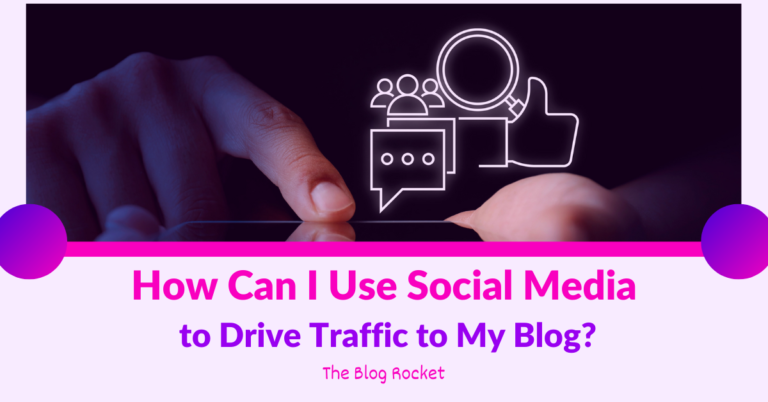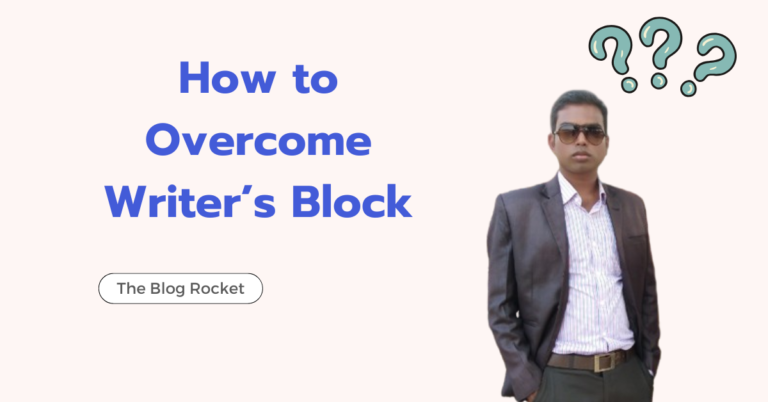Hey there! When I first started blogging – I was utterly overwhelmed by all the moving pieces.
Should I write whatever comes to mind?
How often should I post?
What topics would my readers care about?
Trust me, I know how overwhelming it can feel to keep up with a blog without a solid plan. But everything changed when I discovered the power of content planning, and I’m here to share everything I’ve learned.
Before we dive in, I’ve got something special for you – a FREE 2025 Blog Content Planner that you can download at the end of this post.
It’s the same template I use for my blog, and it’s helped thousands of other bloggers stay organized and consistent.
Contents
- 1 Why I’m Writing This (and Why You Should Care)
- 2 Getting Started: Your Simple 7-Step Content Planning Process.
- 2.1 Step 1: Figure Out What Your Readers Want
- 2.2 Step 2: Setting Goals for Your Blog
- 2.3 Step 3: Map Out Your Content Pillars
- 2.4 Step 4: Create Your Content Calendar (The Easy Way)
- 2.5 Step 5: Build Your Content Framework
- 2.6 Step 6: Make Your Content Search-Friendly
- 2.7 Step 7: Create Your Content Production System
- 2.8 Step 8: Track What Works (In 5 Minutes a Day)
- 3 Common Challenges (and How to Handle Them)
- 4 Future-Proofing Your Content Plan
- 5 My Final Tips for Success
- 6 Final Thoughts
- 7 Using Your FREE 2024 Blog Content Planner
- 8 Let’s Keep the Conversation Going!
- 9 Common Questions I Get Asked
Why I’m Writing This (and Why You Should Care)
After running my blog for over 8 years and helping dozens of bloggers find their footing, I’ve learned that success isn’t about writing whatever comes to mind but having a solid content strategy.
The good news?
Creating one is easier than it might seem.
What’s a Content Plan (in Plain English)?
Think of a content plan like a road map for your blog. It’s answering three simple questions:
- What are you going to write about?
- When are you going to publish it?
- How will it help your readers?
That’s it! No fancy jargon is needed.
Getting Started: Your Simple 7-Step Content Planning Process.
Step 1: Figure Out What Your Readers Want
When I started, I made the mistake of writing about what I thought was interesting without considering what my readers needed. This was a big mistake!
Ask yourself:
- What are their interests?
- What challenges do they face?
- What solutions can I provide?
Tools like Google Analytics or social media insights can help you gather valuable information about your audience. I’ve found that segmenting my audience improves my writing significantly. When I know my readers, my content feels more relevant and engaging.
Here’s how to do it right:
🎯 Quick Action Steps:
- Go to your blog comments and social media
- Write down the questions people keep asking
- Check your most popular posts
- Look at what problems your readers mention most often
Pro Tip: I keep a simple note on my phone to jot down reader questions whenever I see them. These questions are pure gold for future content ideas!
Step 2: Setting Goals for Your Blog
Define What You Want to Achieve
Having a clear vision for your blog is vital.
Do you want to increase traffic, build a community, or generate leads?
Each goal requires a different approach, and I usually make a list to track what I want to accomplish.
SMART Goals
When I set my goals, I use the SMART framework:
- Specific: What exactly do I want to achieve?
- Measurable: How will I track my progress?
- Achievable: Is this goal realistic?
- Relevant: Does this goal align with my blog’s mission?
- Time-bound: When do I want to achieve this goal?
For example, instead of saying, “I want more traffic,” I might say, “I want to increase my monthly visitors by 20% over the next three months.” This clarity makes it easier to craft my content plan.
Step 3: Map Out Your Content Pillars
Think of content pillars like the main chapters of your story. For my blog, I have four main pillars:
- Blogging Basics
- Content Creation
- Traffic Growth
- Monetization
Each piece of content I create fits into one of these categories. Knowing what topics to cover makes planning so much easier.
How to Choose Your Pillars:
- List the main problems your blog helps solve
- Group similar topics together
- Aim for 3-5 main pillars
- Make sure they don’t overlap too much
Step 4: Create Your Content Calendar (The Easy Way)
What Is a Content Calendar?
A content calendar is like your blogging roadmap. It helps you plan what to post and when to ensure a steady content stream.
When I started using a content calendar, it transformed my blogging experience. I felt more organized and less overwhelmed.
Components of a Good Content Calendar
When I create my calendar, I include:
- Post Title
- Publication date
- Keywords
- Content format (blog post, video, etc.)
- Promotion plans (how I will share the post)
My Approach
I used to overthink this part until I realized simpler is better. Here’s my straightforward approach:
Monthly Planning:
- Pick one main topic for each week
- Choose 2-3 supporting subtopics
- Leave room for trending topics or current events
Here’s what my simple monthly plan looks like:
Week 1: Core Topic + 2 related posts Week 2: Reader Question Deep Dive Week 3: How-To Guide or Tutorial Week 4: Case Study or Success Story
Free 2024 Blog Content Planner
I know you’re excited about this! ]
At the end of this post, I’ll share a link to download a FREE 2024 Blog Content Planner I created just for you. It’s simple and effective!
Step 5: Build Your Content Framework
Focus on Quality
I firmly believe that quality trumps quantity. It’s better to publish one fantastic post than several mediocre ones. When I write, I always ask myself, “Is this helpful?” If not, I revise until it is.
Use Engaging Formats
Experimenting with different content formats can keep things interesting. I mix up my blog posts with the following:
- How-to guides (like this one!)
- Listicles
- Personal stories and experiences
- Reviews and comparisons
- Expert interviews
- Case studies
- Tips and tricks posts
These formats keep my readers engaged and eager to see what I’ll post next.
My approach
Every post I write follows this tested structure:
- Hook: Start with a relatable story or problem
- Promise: Tell readers what they’ll learn
- Deliver: Share actionable tips and steps
- Prove: Include examples or case studies
- Guide: Give the next steps or homework
This framework helps me write posts faster and keeps readers engaged. It’s like having a recipe – you know exactly what ingredients you need and in what order.
Making Each Type Work
For how-to guides:
- Break steps into manageable chunks
- Include examples
- Add photos or screenshots
- Address common problems
For personal stories:
- Be honest about challenges
- Share what you learned
- Include actionable takeaways
- Connect it to reader benefits
Tools That Make Life Easier
I keep things simple with these free or low-cost tools:
- Trello for organizing content ideas
- Google Calendar for scheduling
- Grammarly for proofreading
- Canva for creating images
Step 6: Make Your Content Search-Friendly
I learned this hard: great content is only enough if people can find it.
Here’s how I optimize every post:
Voice Search Optimization Tips:
- Use question-based headings (Who, What, Where, When, Why, How)
- Write conversational answers
- Include featured snippet opportunities
- Keep sentences short and clear
Quick Example: Instead of writing “Optimal blog post length,” use “How long should my blog posts be?” Then answer directly: “Blog posts should typically be 1,500 to 2,500 words to rank well in search engines.”
Step 7: Create Your Content Production System
Here’s the system I use never to miss a post:
Weekly Workflow:
- Monday: Research and outline
- Tuesday: Write the first draft
- Wednesday: Edit and add images
- Thursday: Final polish and SEO check
- Friday: Schedule and promote
Time-Saving Tip: I batch similar tasks together. For example, I’ll create all my Pinterest images for the month in one sitting.
Step 8: Track What Works (In 5 Minutes a Day)
You don’t need fancy tools to track your progress. I use a simple spreadsheet to track the following:
- Post titles
- Publish dates
- Page views
- Social shares
- Comments
- Time spent writing
Common Challenges (and How to Handle Them)
Running Out of Ideas
When this happens to me, I:
- Read other blogs in my niche
- Check comments on my posts
- Ask my readers what they want to learn
- Look at my recent challenges
Finding Time to Write
Here’s what works for me:
- Block out specific writing times
- Use templates for similar post types
- Break writing into smaller tasks
- Keep a running list of ideas
Future-Proofing Your Content Plan
Staying Flexible
Your plan should be a guide, not a prison. I regularly:
- Could you review and adjust my content calendar?
- Ask for reader feedback
- Keep an eye on industry trends
- Experiment with new content types
Building a Content Bank
I always try to stay a few posts ahead by:
- Writing when inspiration strikes
- Keeping a folder of draft posts
- Saving research and ideas
- Having a few emergency posts ready to go
My Final Tips for Success
After years of blogging, here’s what I know works:
- Be consistent with your publishing schedule
- Write for your readers, not search engines
- Share your unique perspective and experiences
- Keep learning and improving
- Stay organized but flexible
Remember, your content plan is a living document. It should grow and change as you and your blog evolve.
Final Thoughts
Creating a content plan for your blog doesn’t have to be overwhelming. You can set yourself up for success in 2024 and beyond with the right strategies.
Remember to keep your audience at the forefront of your planning and to use tools and resources that work for you.
I hope you found these tips helpful! Don’t forget to download your FREE 2024 Blog Content Planner here. I’m excited for you to start your blogging journey with a solid plan!
Happy blogging! If you have any questions or need more tips, feel free to comment below.
Using Your FREE 2024 Blog Content Planner
Now for the fun part! Based on everything we’ve covered, I’ve created a simple but powerful content planner.
Here’s what’s included:
- Monthly Overview Calendar
- Weekly Content Scheduler
- Content Pillar Worksheet
- Idea Bank Template
- Performance Tracker
How to Use Your Planner:
- Download the planner (link at the bottom)
- Start with the Content Pillar Worksheet
- Fill in your Monthly Overview
- Use the Weekly Scheduler for detailed planning
- Track your progress in the Performance section
Your Next Steps
- Download your FREE 2024 Blog Content Planner below
- Choose your main content pillars
- Plan next month’s content using the calendar
- Start with one pillar post
- Track your results
Remember, the best content plan is the one you’ll follow. Start simple and adjust as you go.
[Download Your FREE 2024 Blog Content Planner]
Let’s Keep the Conversation Going!
What’s your biggest challenge with content planning?
Drop a comment below – I read and respond to every single one!
[Related: How to Write Blog Posts That Convert >>]
[Related: The Ultimate Guide to Blog Post Templates >>]
[Related: Blog Traffic Growth Strategies >>]
Common Questions I Get Asked
I plan my main topics three months ahead but leave room for timely content. This gives me enough structure while keeping me flexible.
When starting, focus on one high-quality post per week. It’s better to publish one great post than three rushed ones. I learned this after burning out and trying to post daily.
Trust me, this won’t happen if you:
Keep a running list of reader questions
Follow industry news
Read other blogs in your niche
Pay attention to your daily life for inspiration







